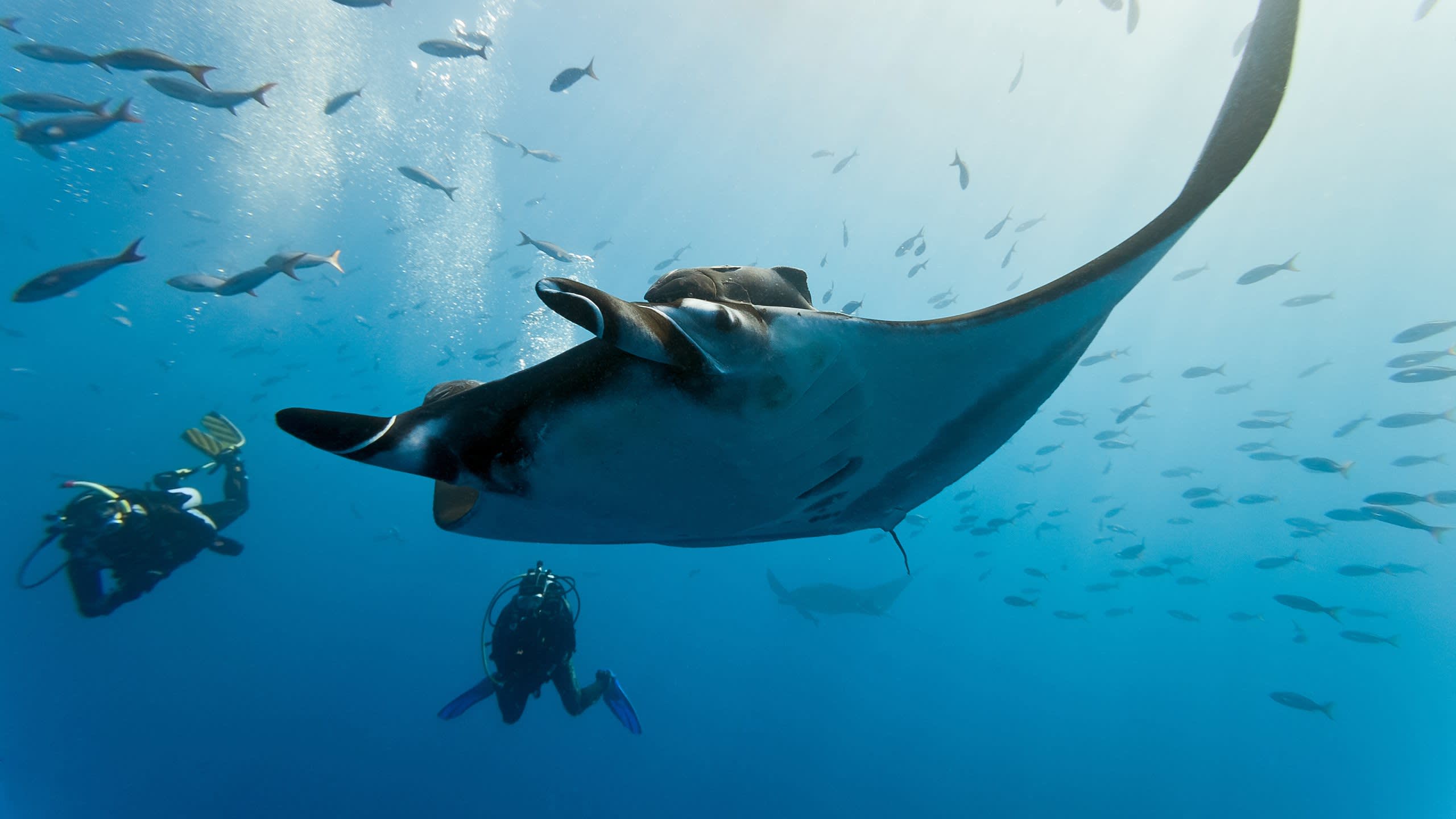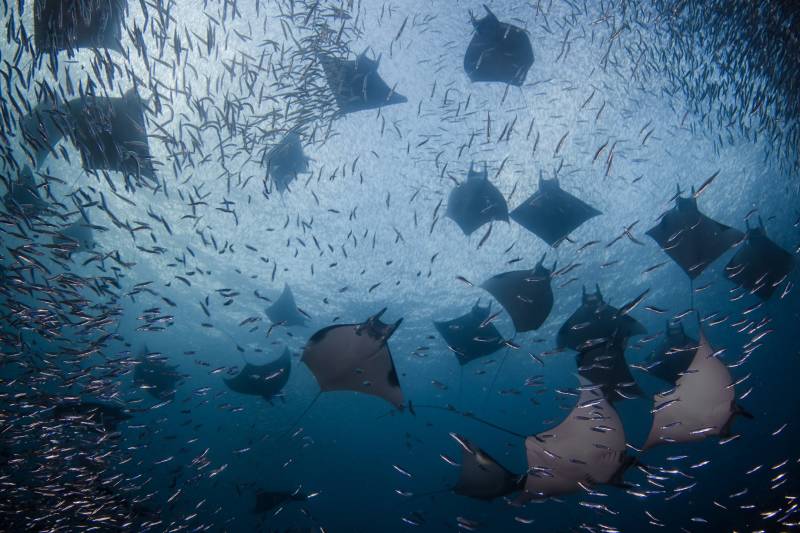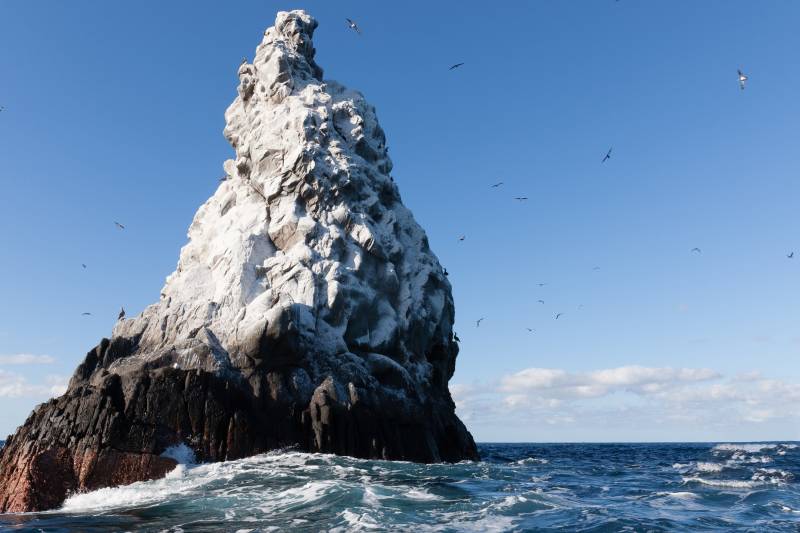Length

The Majesty Of Mantas
Diving Socorro and the Revillagigedo archipelago

Diving Socorro and the Revillagigedo archipelago

If you like your wildlife larger-than-life, then head to Mexico’s Revillagigedo archipelago, some 600km off the country’s Pacific coast. Getting to the islands of San Benedicto, Clarion, Roca Partida and Socorro might be hard – they’re a 24-hour journey from Cabo San Lucas - but for those who make the journey, they offer marine life in abundance that is rarely seen anywhere else on the planet. For what these islands lack in colourful reefs, they make up for with giant oceanic manta rays, resident pods of bottlenose dolphins, and the occasional mammoth-sized whale shark.
Socorro Island is well-known for the amazing opportunity it provides to observe one of the friendliest pelagic species – the giant Manta Ray. Despite their intimidating 12 to 16-foot wingspan, these graceful oceanic acrobats take great interest in passing divers and are known to enjoy rolling and swimming overhead, seeming to enjoy the gentle tickling sensation of the air bubbling up from the scuba equipment. Giant oceanic manta sightings are common between November and July, and the very best sites – like The Boiler off San Benedicto Island – also double as manta cleaning stations.


From the seafloor to the surface, these protected waters are alive with a thriving ecosystem, offering divers the chance to observe how the oceans might have been 200 years ago. Manta Rays and pods of dolphins are often spotted eagerly greeting yachts as they enter the region, and divers are often accompanied by the friendly clicks and squeaks of these playful creatures as they explore. Humpback whale sightings are also common, and divers can watch them breach and roll between January and April each year. The area is also home to nine species of shark, including the majestic whale shark.
The Archipelago marine reserve now protects over 148,000 miles of underwater species, making it the largest protected marine reserve in North America. Litter and other dangerous and unnatural items that could harm the wildlife are removed regularly and scientists in the area are researching new ways to improve underwater conservation. By choosing to dive here, you will be helping keep this marine ecosystem alive and flourishing for future generations of divers.

View more inspiration for your yacht charter in Mexico
let's chat.
Get in touch with one of our teams around the world
Where you'll find us
Monaco — MC
+377 93 50 12 12London — UK
+44 20 7584 1801Fort Lauderdale — US
+1 954 278 3970Auckland — NZ
+64 9 281 5133Contact us
[email protected]